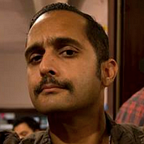The paramedics rolled in the patient. She lay there, unconscious. But rather than assuming a relaxed and peaceful pose, as if she were asleep, her body was uncomfortably contorted with her legs and arms contracted. Unfortunately, the paramedics were unable to provide any context that had led to the woman’s unconscious state.
As the emergency room staff collectively transferred her to the hospital bed, the physicians huddled around her, contemplating the reason behind the woman’s collapse. One physician suggested that the woman had a STEMI.
Perplexed by the acronym, I racked my brain, trying to recall conditions that I had learned back in my EMT training as I had only covered anatomy and histology in medical school at that point. Could she be injured at her brainstem, causing the contorted positioning of her limbs? No, the doctors appeared way too calm and composed for such a dire outcome to be possible.
As I turned back into the physicians’ conversation, other physicians had chimed in, agreeing that a STEMI was a very likely possibility. There was talk about activating the STEMI system and calling the CATH lab. Meanwhile, another physician printed out EKG results, and exclaimed, “It’s a STEMI!”, sounding relieved by the consistent diagnosis. The attending physician confirmed the resident’s suspicion, and then everything spun into motion.
A physician definitively proclaimed, “STEMI is activated” while others rushed to connect the patient to a portable heart monitor and place an O2 cylinder next to her. The resident I was shadowing began pushing the gurney and was joined by a woman and a 4th-year medical student. Unsure of my position among the commotion, and not wanting to interfere in the synchronous actions I stood still and observed. The 4th year medical student began to follow the resident out of the room, but turned back as if he could sense my uncertainty, and motioned for me to follow them. I smiled, ready for action, as adrenaline and curiosity gave me a burst of energy.
I was unsure where the cath lab was, but I knew we were going there quickly. The tall, slim, red-headed resident maneuvered in an out of elevators and through corridors so swiftly and gracefully, as if he was skating rather than pushing a patient and her gurney through the narrow hallways. The 4th year medical student complemented the resident well as if he knew the resident’s next move. He kept up with the resident’s pace and even ran ahead to open doors with his badge, call elevators, and clear the hallway for the resident and the patient.
On the other hand, the woman did not seem very fond of the brisk pace. She trailed behind, and I slowed my pace so she wouldn’t entirely feel left behind. Annoyed, she called out to the resident that she was the RT and that she needed to be kept near the patient. When we were finally all in the elevator together, she gave the resident a piece of her mind. But the resident simply stated that the STEMI patient needed to get to the cath lab within 10 minutes of STEMI activation and as soon as the elevator doors opened, he was off again. This time, I resolved to keep up with the resident and 4th-year medical student, because I realized that their utmost priority was the patient, not the RT’s comfort, and they were doing everything in their power to transport the patient to resources that would save her life.
Finally, we made it to the cath lab, and we all expelled a sigh of relief. I had a moment to take in the spacious, bright room, contrasting the dark, narrow halls that we were previously navigating through. As the resident, 4th-year medical student, and I took a step back, the cath lab technicians and the RT transferred the patient to their gurney and prepared the appropriate tools. As the attending physician walked through the double doors, the resident explained the details of the case. We then gathered our equipment and left, strolling back to the ER. The 4th year medical student then explained the details of the case and answered all my lingering questions.
Within the span of these thirty minutes, I observed the versatile nature of emergency medicine physicians. The team was able to work together, level-minded, to determine the patient’s condition, decide upon the appropriate plan, take action in a high-intensity situation, and return to a more relaxed state.
Their jobs required a host of contrasts: having both brains and brawn, being both calm and assertive. Despite the patient being in an unconscious state with no previous medical history or family present, the physicians identified the condition and how to address it in the best way. And while the patient would never meet these physicians who reacted with such tenacity and compassion to save her life, the physicians were able to move on, ready to address the next unpredictable situation that would await for them in the resus room.
Heaveen is a second year medical student. She enjoys reading, traveling, baking and trying new things. She is a contributor to the Physician Grind, where this article was originally published.
